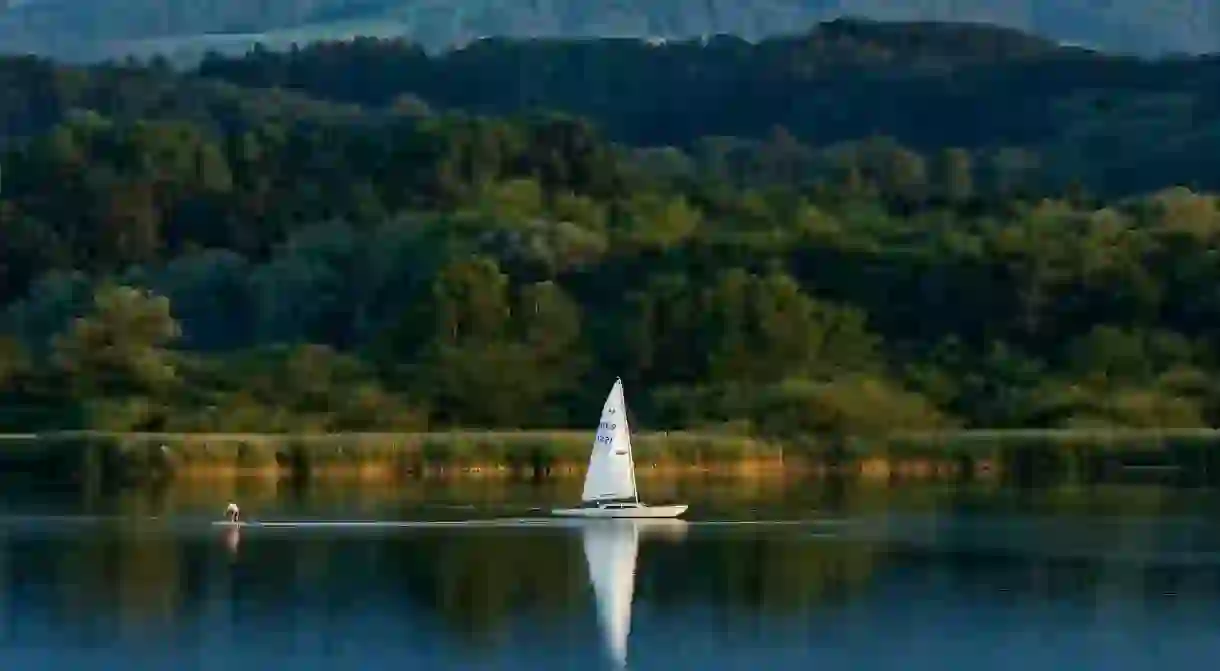The Top Things to See and Do in Idar-Oberstein, Germany

Idar-Oberstein is a placid village in the Hunsrueck region known for its natural gemstone deposits, spit roast dinners, great hiking trails – and for being Bruce Willis’s birthplace. We’ve had a look at what there is to do in and around town and have come up with a list of ten things that will help you plan your stay.
German Gemstone Museum, Idar-Oberstein
All that glitters is not gold, you may say. Especially once you step into Idar-Oberstein’s main attraction: a museum entirely dedicated to gemstones. All three floors of the villa are packed with crystals, diamonds and virtually every type of gemstone you can find on this planet, surmounting to a whopping 10,000 individual items on display. The vaulted cellar rooms are reserved for special exhibitions revolving around the precious crystal clusters.
Oberstein Castle, Idar-Oberstein
Oberstein Castle is a fortress perched on a stark cliffside north of the Oberstein village. The fort served as a permanent residence for the Count Daun-Oberstein until the early 17th century and was later used as the administrative seat. Wars and fires destroyed the fort over the course of history, and its reconstruction continues to this day. You can explore the inside at your own pace for a fee of €2; guided tours need to be arranged up front.
Felsenkirche, Idar-Oberstein
Idar-Oberstein’s most famous landmark is the so-called Felsenkirche (which translates into English as ‘church of the rock(s)’), which is quite a telling name, given its location. The chapel does not sit on or near a rock but is rather built into the rock beneath Oberstein Castle. No roads lead up to the church – to get there, you will need to walk through a tunnel and climb up a set of 230 steps up to the ledge.
Nahe-Skywalk
One of the most popular vantage points in the region is located approximately 20 kilometres outside of Idar-Oberstein. The Nahe-Skywalk was only installed three years ago and has since become a not-to-miss attraction for those visiting the area. The steel-and-glass observation deck juts out from the hilltop and over the Nahe River, which flows 70 metres below and offers panoramic views of the surrounding valley.
Fort Bosselstein
You’ve probably seen the Crag Church from afar if not close-up, but if you turn slightly to the right and look you’ll spot another one of Idar-Oberstein’s sights – the remains of the Bosselstein Fort. Built in the 12th century, the fortress started to decay after it was abandoned in 1600. Now, not much is left, other than the crumbling ruins of the castle keep and the surrounding wall. A climb up to the former fort is still worth it for the views of the Nahe valley.
Hunsrück hikes

Idar-Oberstein is the perfect base if you want to explore the many hiking paths in the area. The most renowned trail is the 410-kilometre-long Saar-Hunsrück Climb, which begins just north of the town centre and leads all the way to through the Saarland state and to the Luxembourg border or to the city of Trier further north. If you’d rather just spend a couple of hours exploring the region, take on one of the circular routes or short-distance hikes instead.
Jakob Bengel Industrial Museum

In 1873, Jakob Bengel founded his company that initially produced pocket watch chains, but as time went on, the locksmith found himself inspired by Bauhaus and Art Deco designers and started producing jewellery and accessories. The museum takes visitors on a tour through the virtually unchanged manufacturing plant and explains the technology, processes and antique machinery involved in the production around 130 years ago.
Erbeskopf Mountain

A short drive gets you to the highest peak of Rhineland-Palatinate. Erbeskopf Mountain climbs to a height of 816 metres (2,677 ft) and is worth a trip all year round. In the summer months, you can zoom down the mountain on the toboggan run, and with snowfall the mountain range transforms into a winter wonderland and popular skiing piste.
Spießbratenhaus

Idar-Oberstein has a number of great restaurants, but one tops the charts. German immigrants brought culinary traditions from Brazil back to Germany and over the decades, the restaurant has perfected their take on a perfect spit roast. On the menu are marinated pork neck, slow-roasted beef or saddle of lamb, all prepared over an open fire. Yet, that’s far from everything, as there are also salads, Flammkuchen, burgers, pasta, pizza and more.
Did you know – Culture Trip now does bookable, small-group trips? Pick from authentic, immersive Epic Trips, compact and action-packed Mini Trips and sparkling, expansive Sailing Trips.













